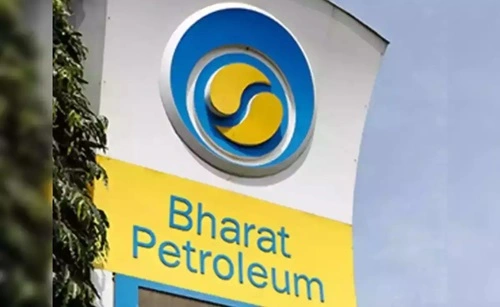Bharat Petroleum Corporation Ltd. (BPCL) is one of India’s leading state-owned oil and gas companies. With extensive operations in refining, distribution, and retailing, BPCL is a key player in India’s energy sector. Established in 1952 and headquartered in Mumbai, BPCL has evolved into a critical contributor to the nation’s energy requirements and is also making strides in renewable energy. This SWOT analysis provides insights into BPCL’s internal strengths, weaknesses, and the external opportunities and threats the company faces in 2024.

BPCL Current Overview:
BPCL operates four major refineries located in Mumbai, Kochi, Bina, and Numaligarh, refining over 38 million metric tons of crude oil annually. The company also boasts a vast network of over 19,000 retail outlets across India, including its well-known “Bharatgas” LPG brand that serves millions of households. As of 2023-24, BPCL’s strategic focus is on diversification, venturing into renewable energy, and improving its refinery capacity. Recent initiatives include expanding into petrochemicals, where BPCL is investing in projects such as the Bina Petrochemical Complex.
Strengths:
1. Government Support and Strong Market Position: Being a government-backed enterprise, BPCL benefits from significant financial stability and operational support. It has a strong market presence in the Indian petroleum sector, which provides a competitive advantage.
2. Large Retail Network and Strong Brand Recall: BPCL’s extensive retail network, with over 19,000 fuel stations, ensures wide reach. The company is a trusted name in India, particularly with its Bharatgas LPG brand, which enjoys high customer loyalty.
3. Operational Expertise in Refining and Distribution: BPCL has strong expertise in refining and distributing petroleum products, maintaining efficient operations across its refineries, which ensures robust production capabilities.
4. Diverse Product Portfolio: BPCL has a wide range of products, from refined fuels to LPG, petrochemicals, and aviation fuel. This diversification reduces risk from over-dependence on a single product line.
Weaknesses:
1. Operational Delays due to Bureaucracy: Being a state-run enterprise, BPCL faces bureaucratic inefficiencies and slower decision-making processes, which can hinder its operational flexibility and responsiveness.
2. Dependence on Domestic Markets: BPCL’s revenues are largely reliant on India’s domestic market. This heavy dependence makes the company vulnerable to changes in domestic policies, economic slowdowns, or regulatory shifts.
3. Privatization Uncertainty: The Indian government’s ongoing plans to privatize BPCL have created uncertainty around its future ownership and operational strategies. So far, attempts to attract substantial bids from private investors have failed.
Opportunities:
1. Growing Demand for Natural Gas: The natural gas market is expanding rapidly in India, and BPCL is well-positioned to capture this opportunity through its investments in gas distribution and LNG infrastructure.
2. Expansion into Renewable Energy: BPCL is actively working towards diversifying into renewable energy sectors, including solar and wind energy. The company’s shift towards greener alternatives could help it stay relevant in a future focused on sustainability.
3. Global Oil Price Increases: Rising global fuel prices could boost BPCL’s profit margins in the short term, especially if managed well in the refining and retail sectors.
4. Investment in Petrochemical Ventures: BPCL’s foray into petrochemicals, with the launch of the Bina refinery expansion, is expected to open new revenue streams and reduce its reliance on traditional petroleum products.
Threats:
1. Environmental Regulations: As a major oil and gas company, BPCL faces stringent environmental regulations regarding emissions and pollution control. Compliance costs are likely to rise, potentially impacting profitability.
2. High Competition in the Indian Market: The Indian oil and gas sector is highly competitive, with major players like Indian Oil Corporation (IOC), Reliance, and Hindustan Petroleum (HPCL) constantly vying for market share. This intense competition limits BPCL’s ability to grow rapidly.
3. Fluctuations in Global Oil Prices: Volatility in global crude oil prices could significantly impact BPCL’s margins, especially in periods of rising crude prices or fluctuating demand.
4. Privatization Risks: The ongoing uncertainty surrounding the government’s disinvestment plans for BPCL has raised concerns among employees, investors, and stakeholders. The inability to find a suitable private investor could lead to operational disruptions.
Future Plans:
BPCL’s future roadmap focuses on increasing its refinery capacity, expanding its footprint in the petrochemical sector, and accelerating its foray into renewable energy. The company is also targeting increased investments in electric vehicle (EV) charging infrastructure and green hydrogen production to align with India’s sustainability goals. With its Bina refinery expansion and other initiatives, BPCL aims to become a more diversified energy company, reducing its reliance on traditional fuel products.
Conclusion:
BPCL remains a crucial player in India’s energy landscape, leveraging its strong market position, extensive distribution network, and government backing. However, it must navigate challenges such as environmental regulations, privatization uncertainties, and increasing competition. By capitalizing on opportunities in the renewable energy and petrochemical sectors, BPCL can further enhance its business resilience and ensure sustainable growth in the future.